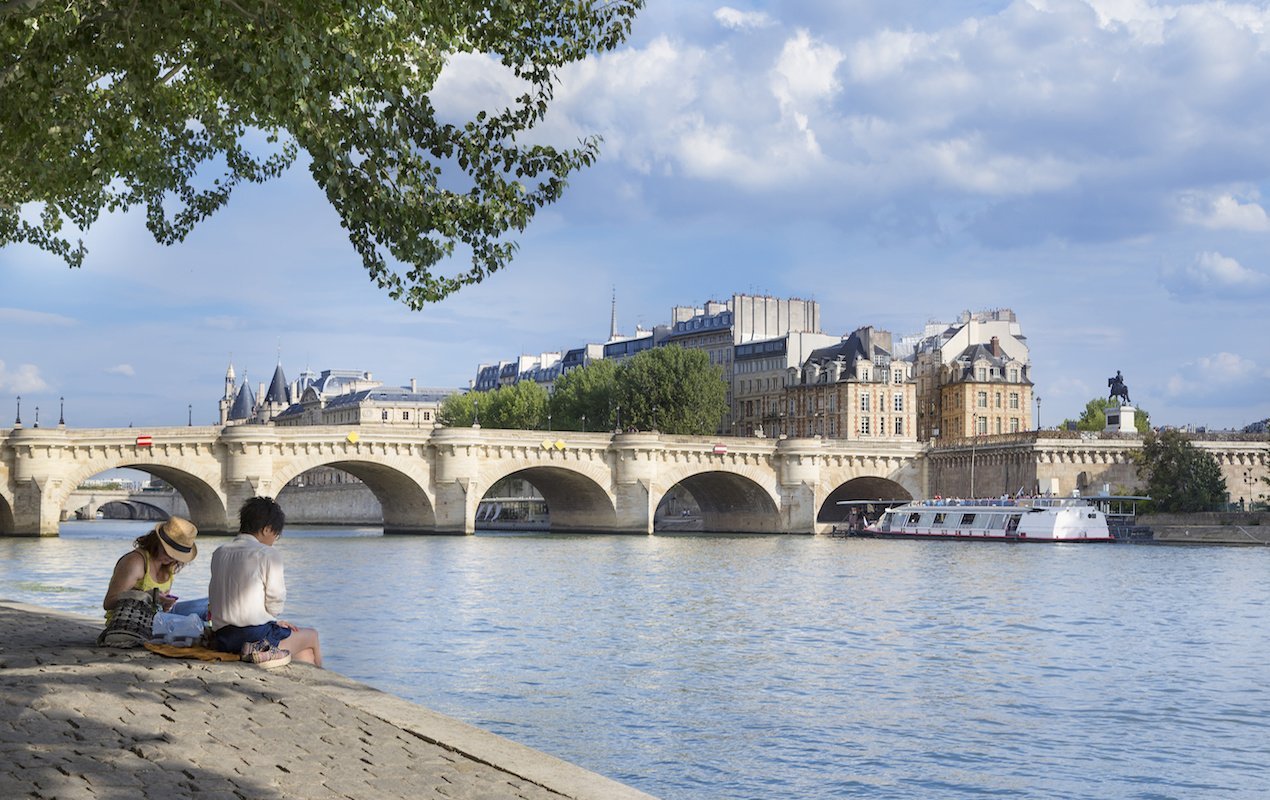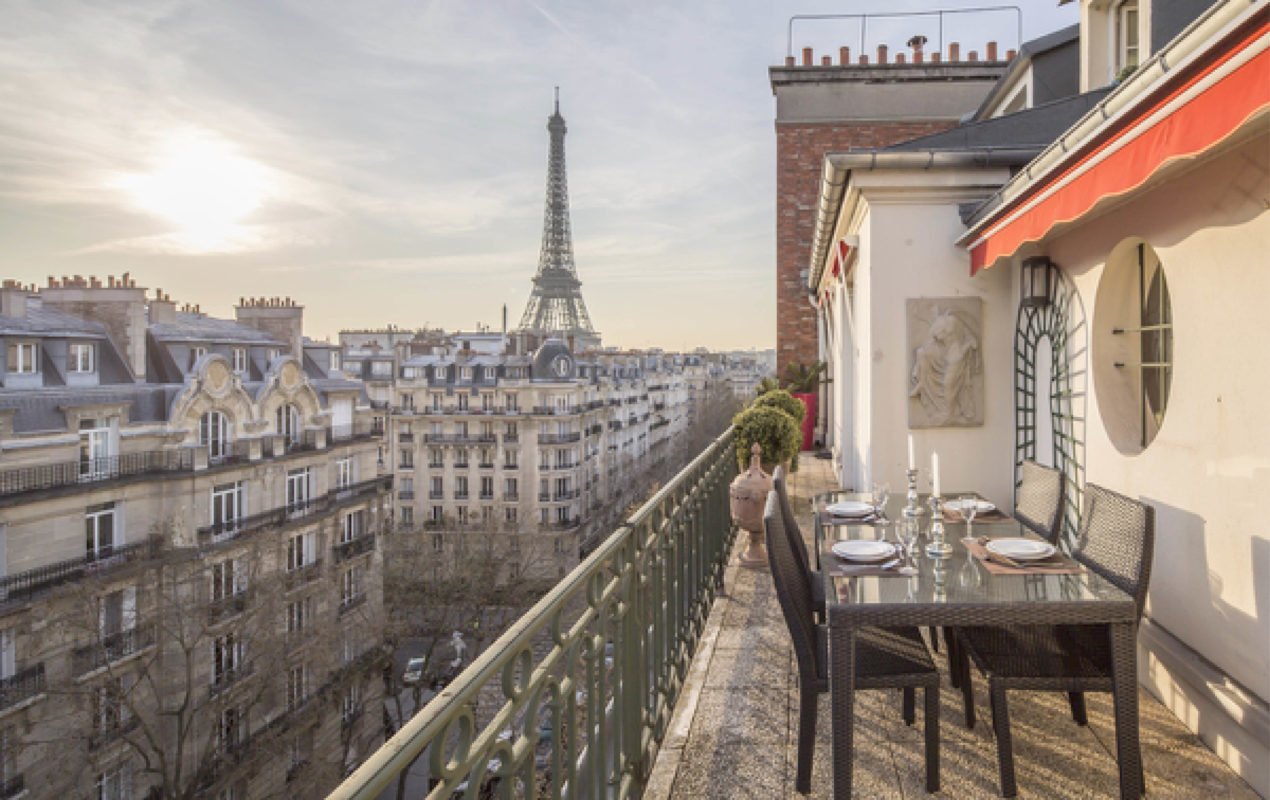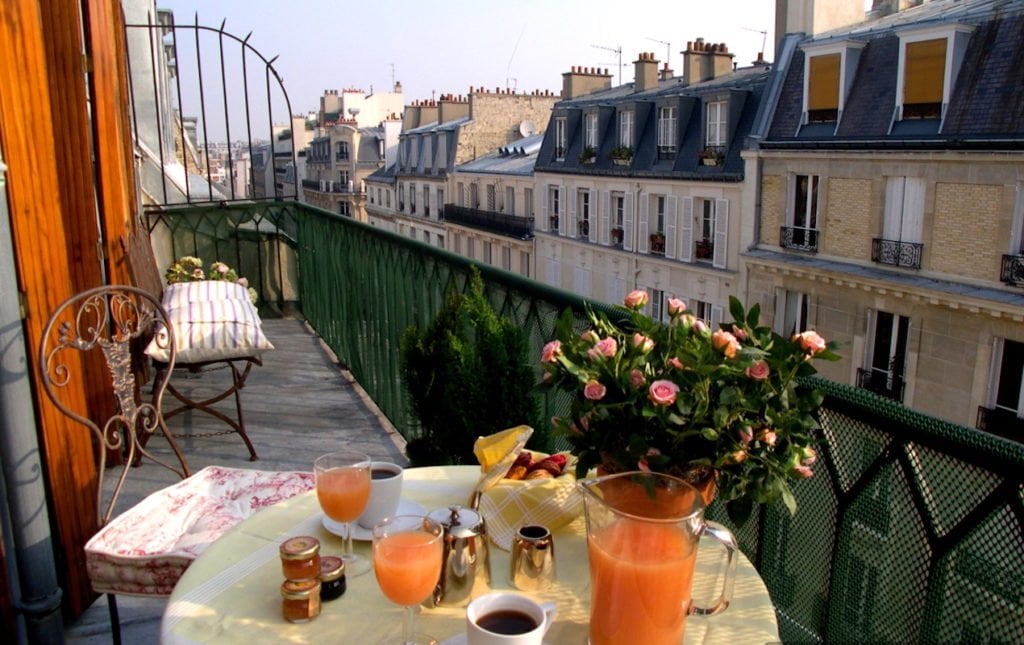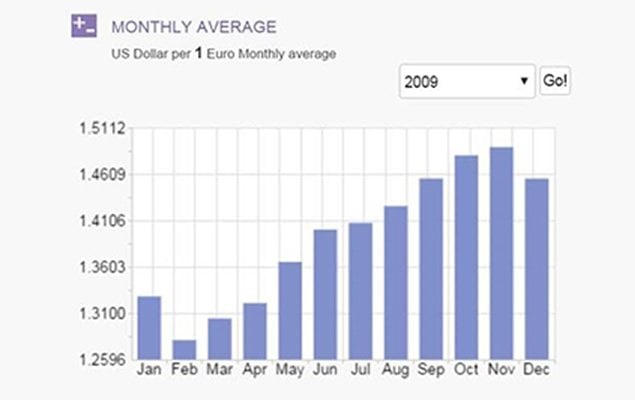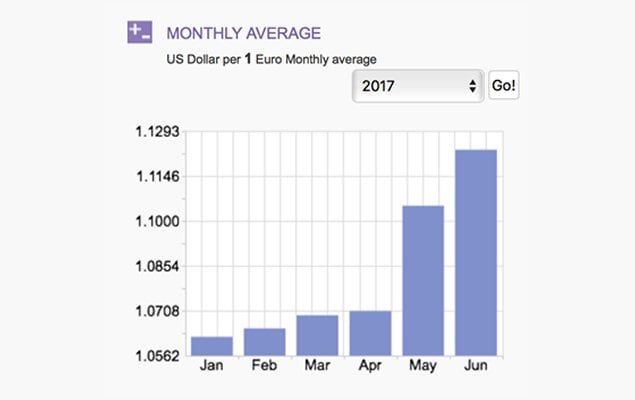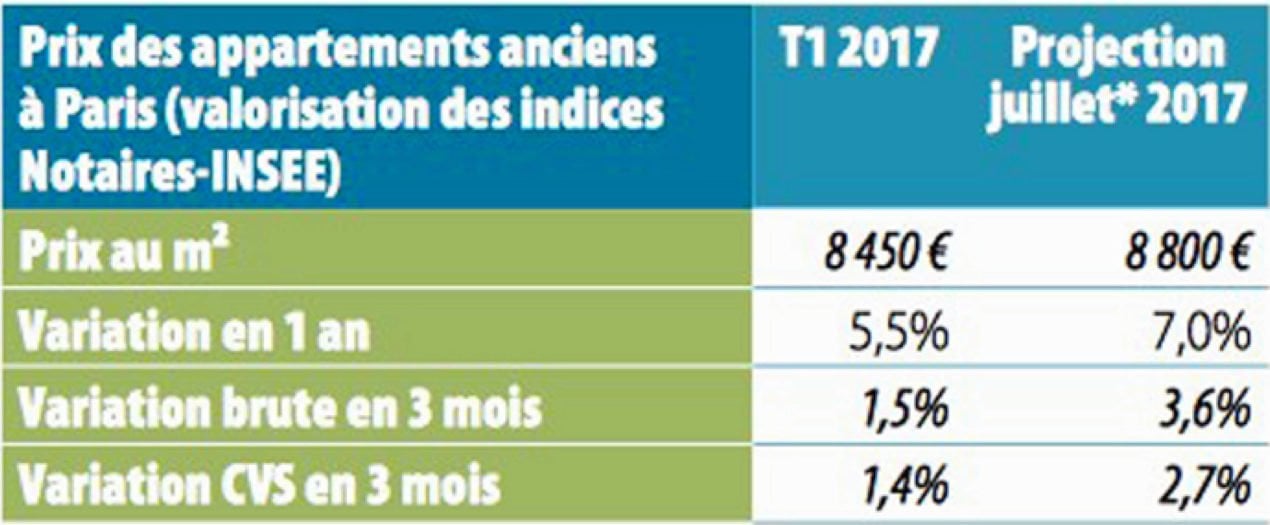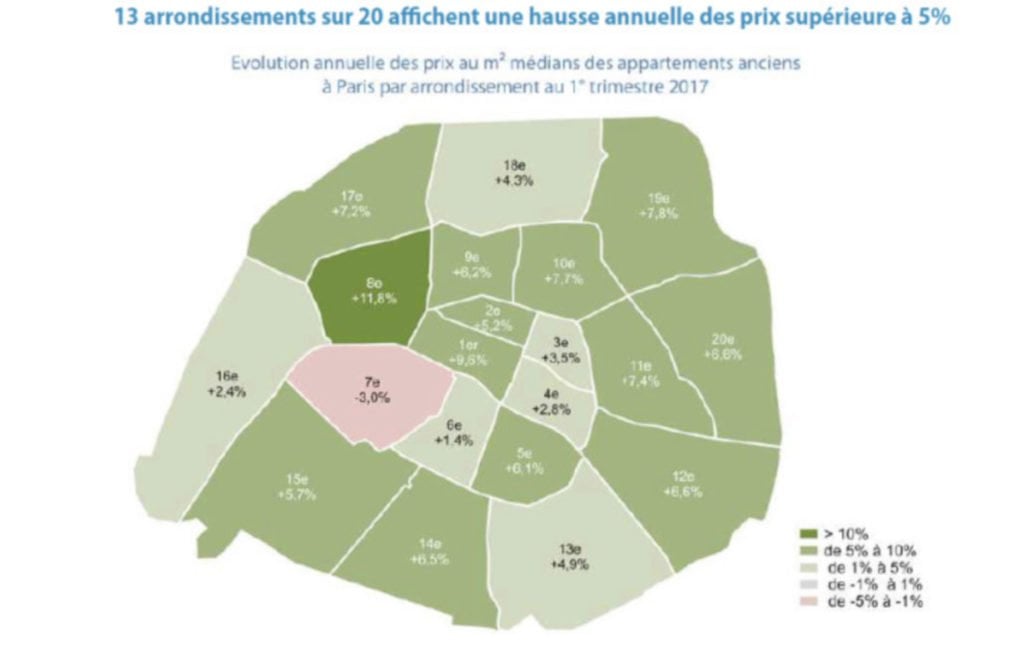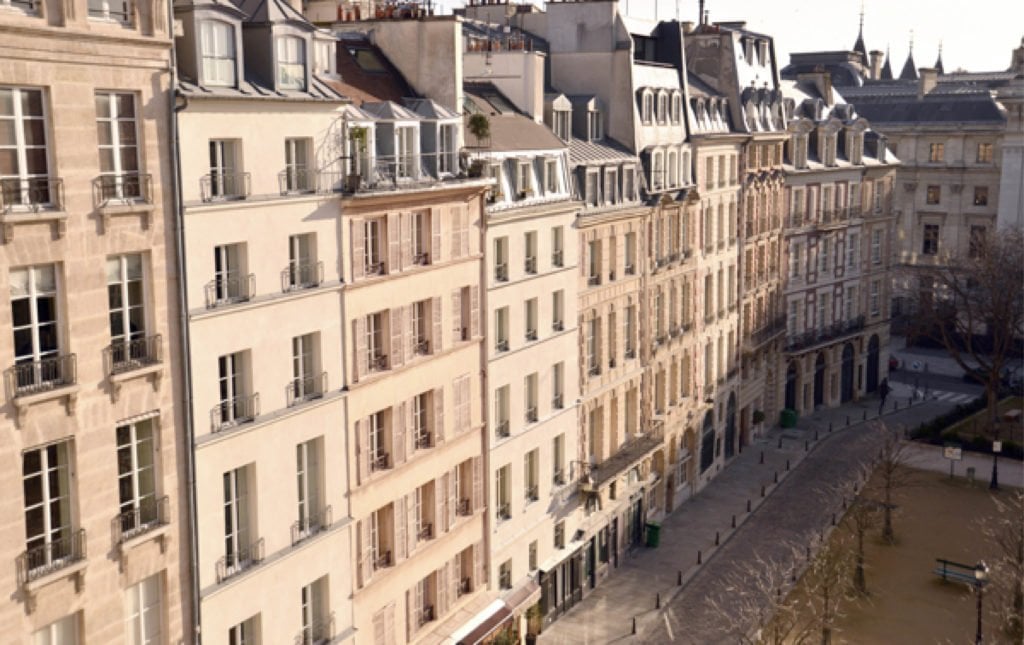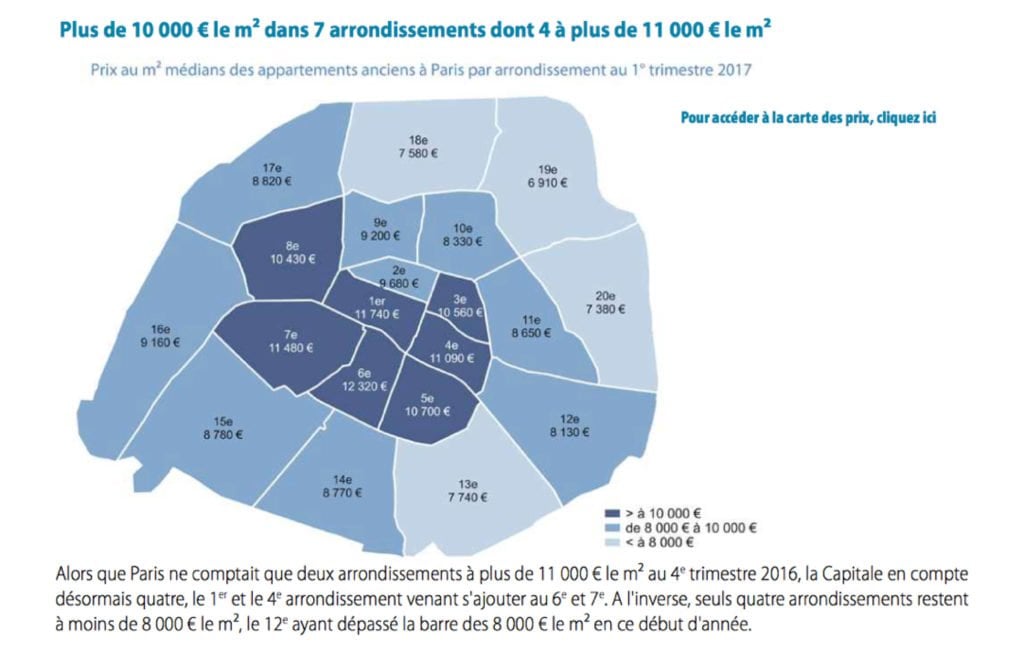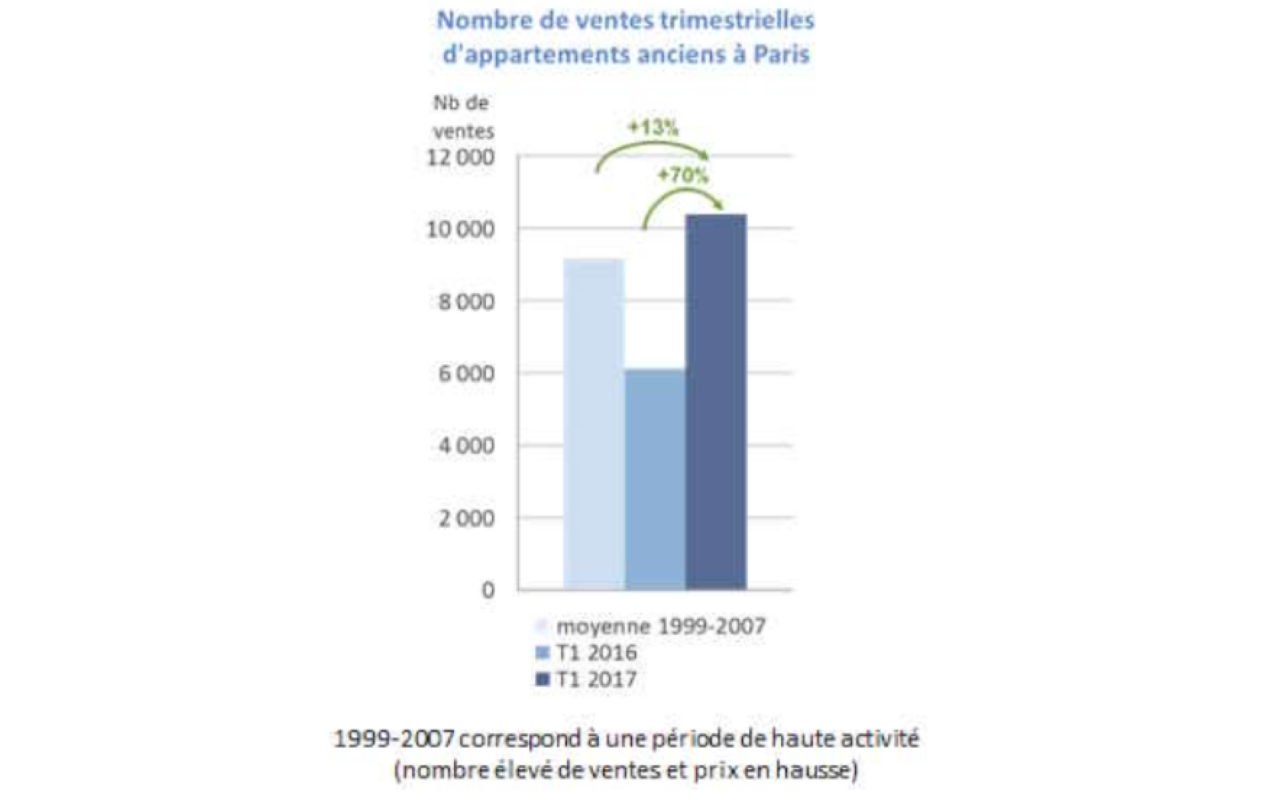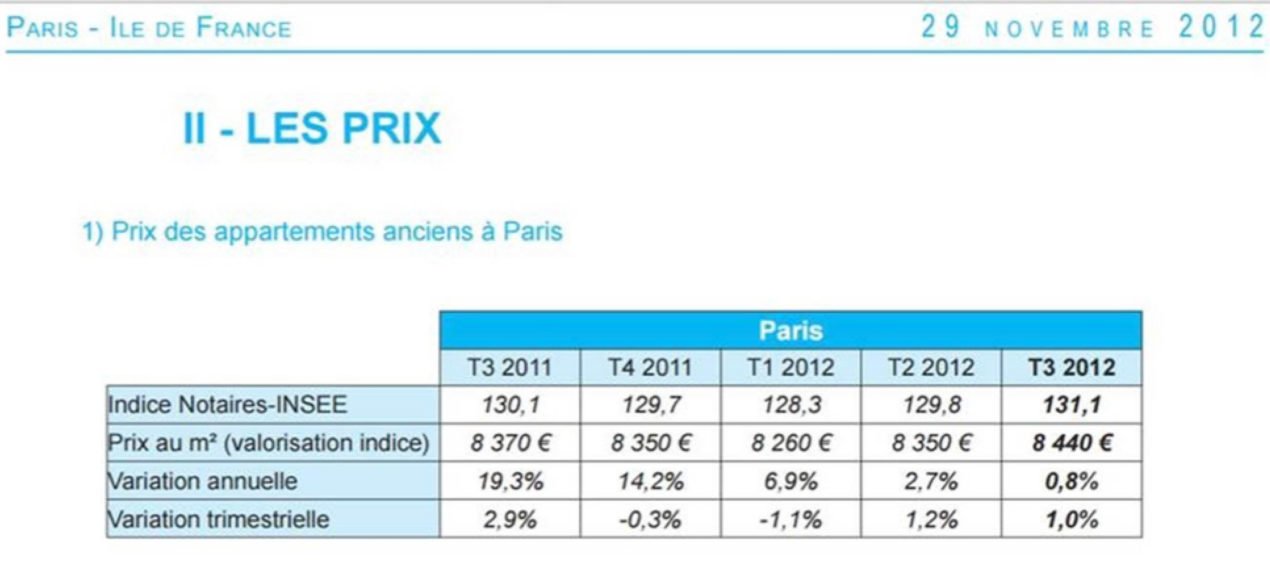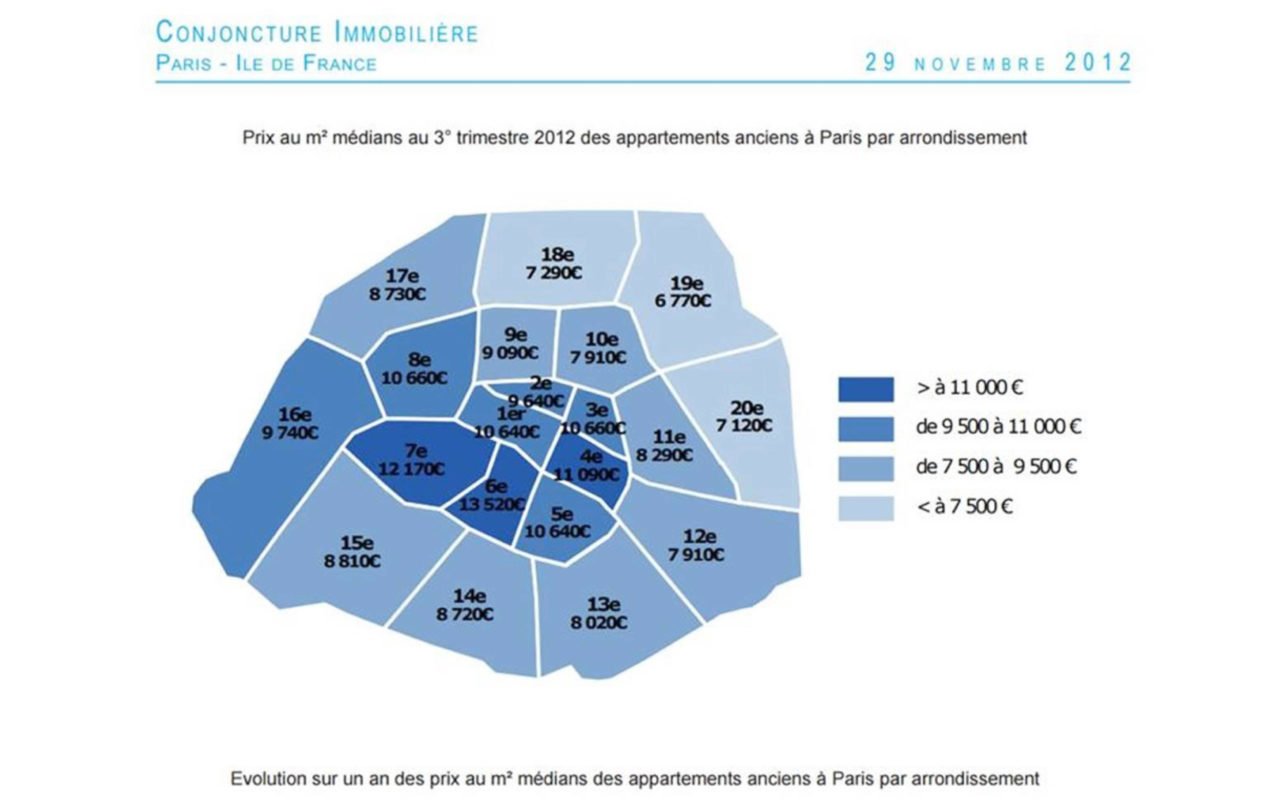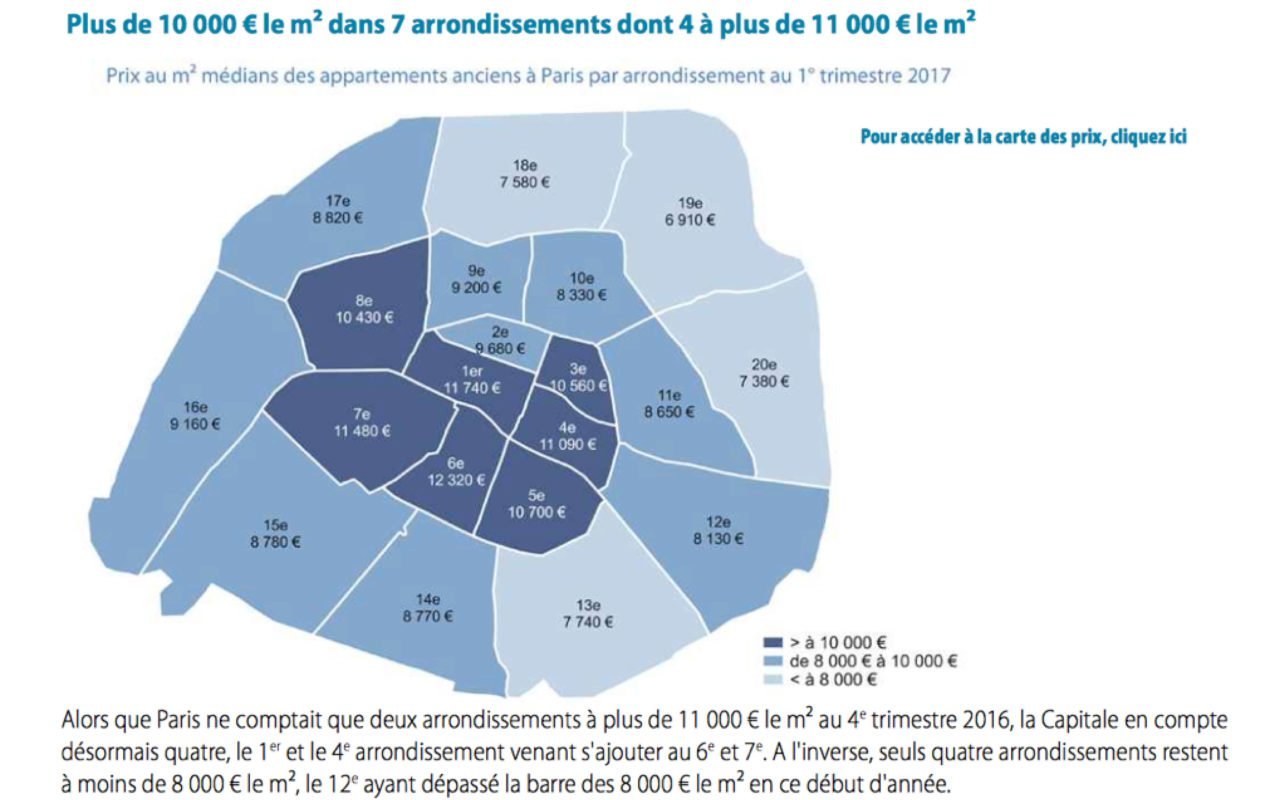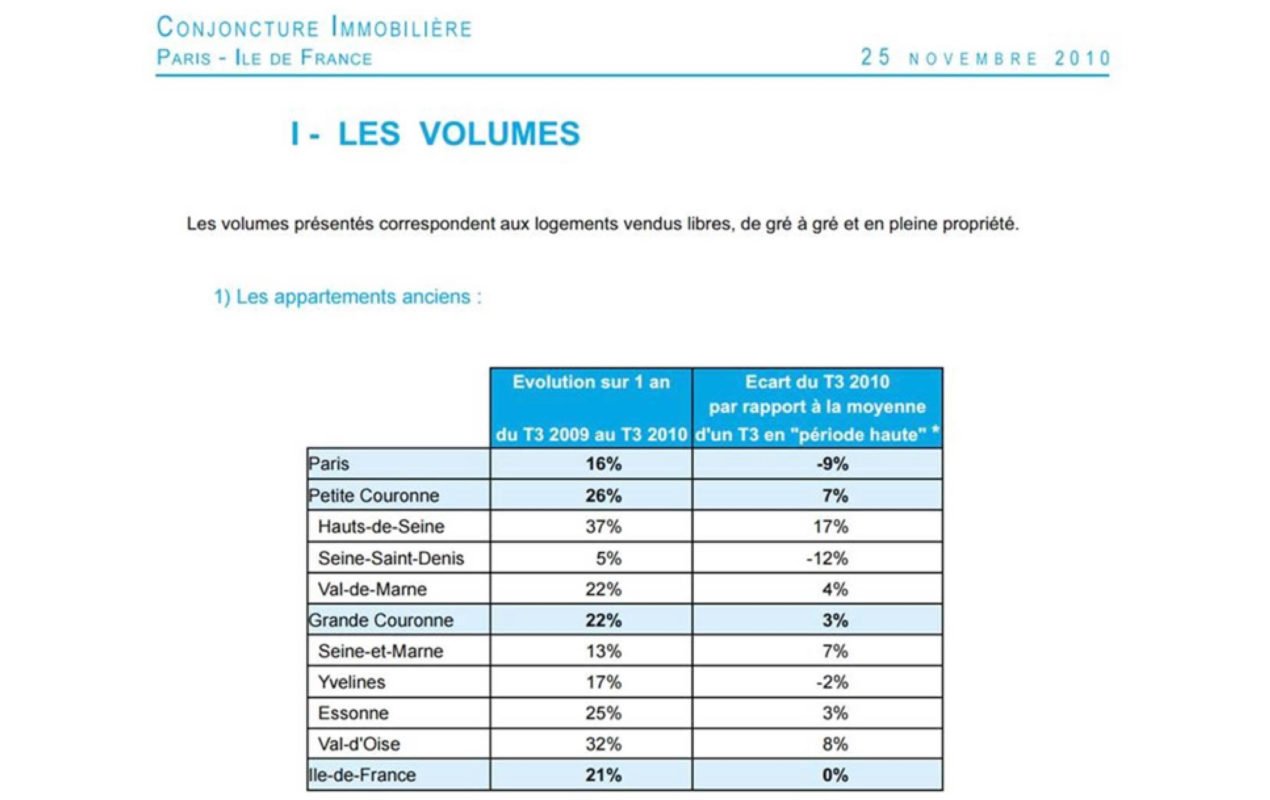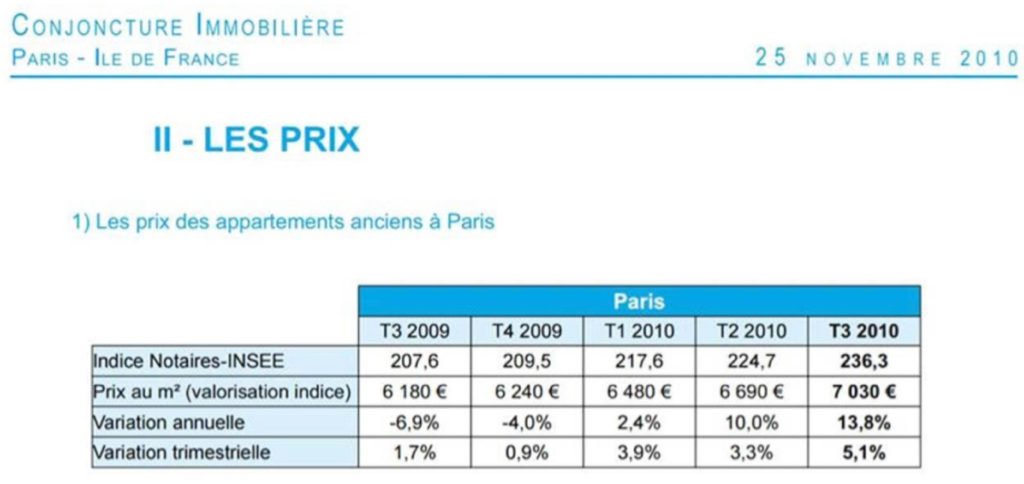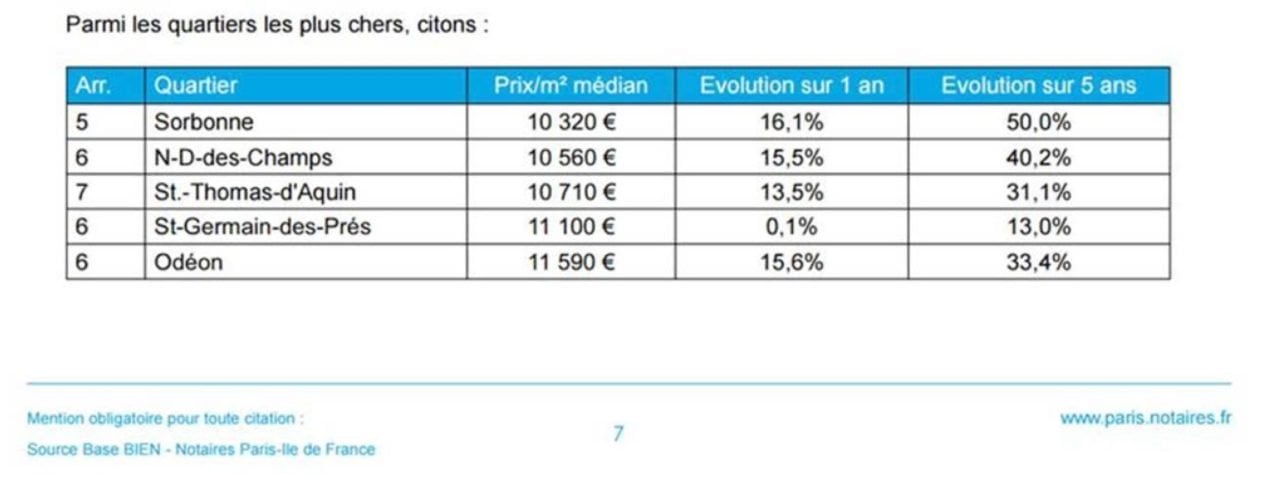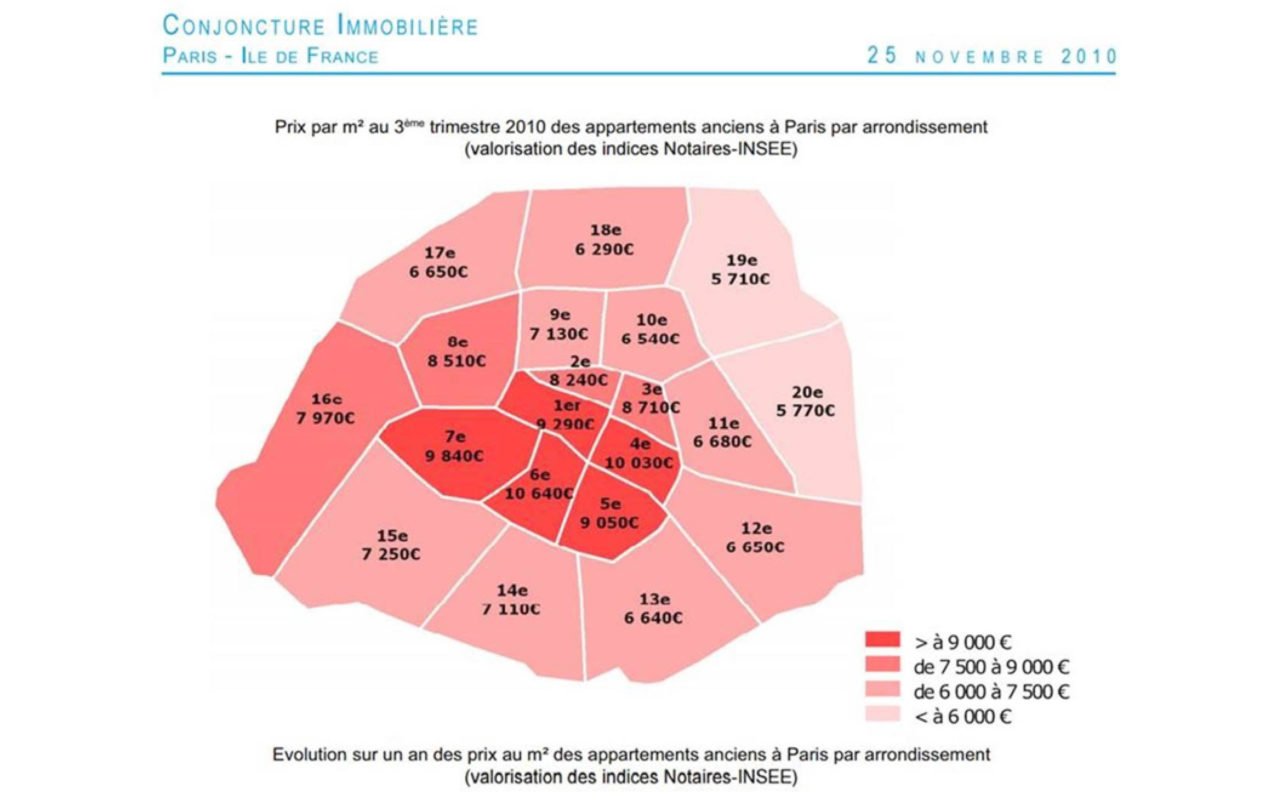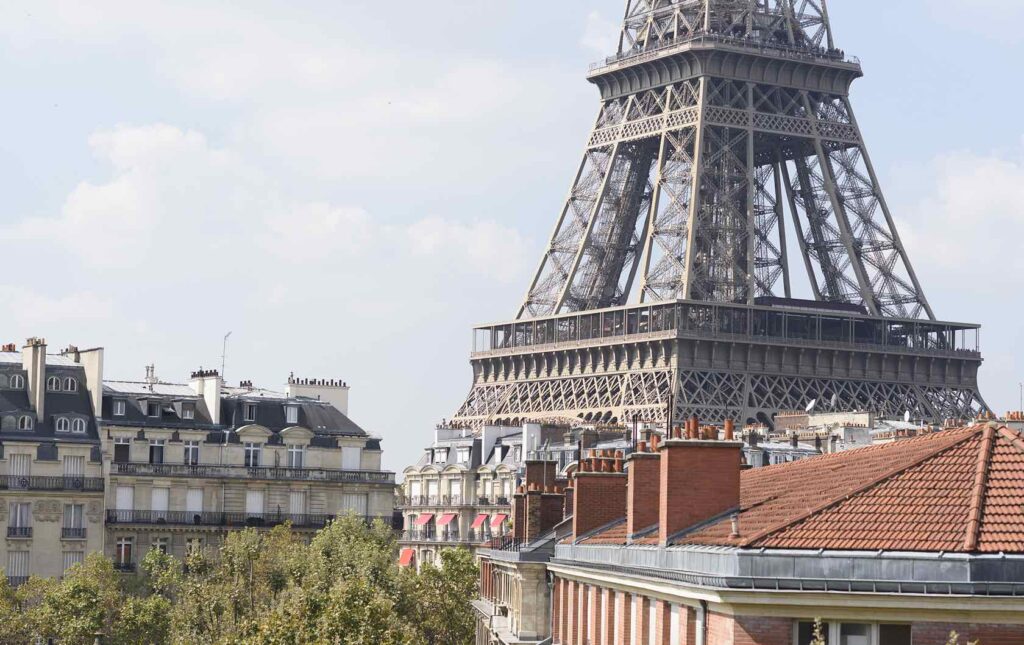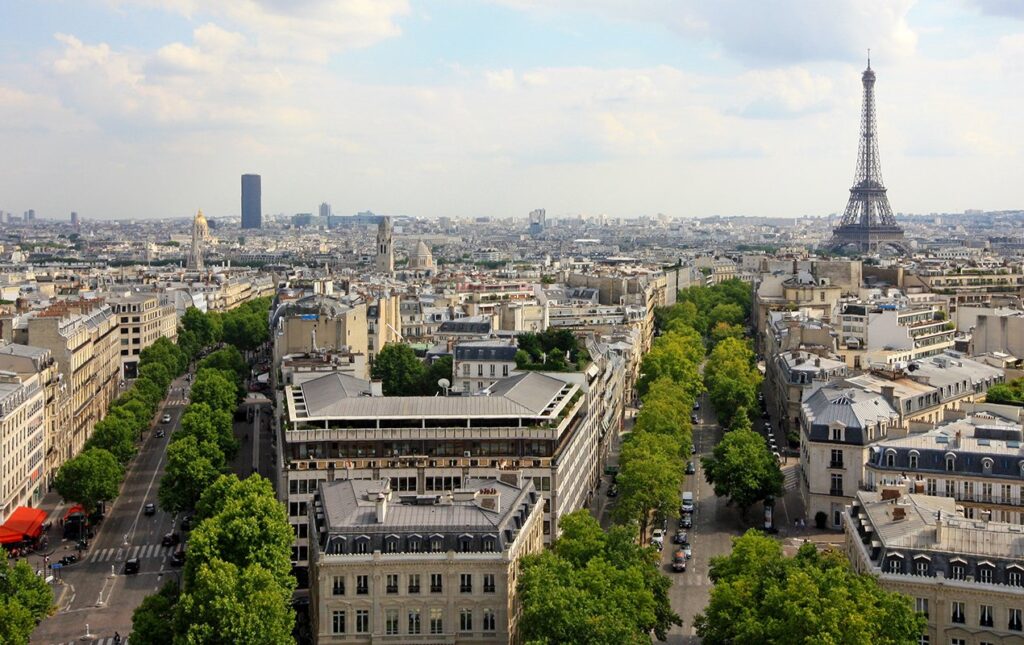After 7 years of stagnation, Paris apartment prices trended higher in late 2016 and accelerated in early 2017. This trend is expected to continue throughout 2017 and beyond.
The Contributing Factors:
- Scarcity value of prime real estate in Paris (the City cannot tear down existing buildings and build taller ones, nor expand its fixed boundaries
- Paris on Sale: For dollar-based investors, real estate prices are effectively 23% cheaper than five years ago. We believe the rise of the dollar makes investing in Paris real estate a “no brainer” today
- Historically low interest rates
- Macron’s election has brought new optimism to France and expectations of decreased taxes and removal of Paris rental price caps and controls.
- Finally, Brexit means some EC institutions and employees based in London today must migrate to other European cities, including Paris.
Paris Apartment Prices
History and Where We Are Today
We decided to dig back to understand the trends post the 2008 global crash, to see what happened in Paris and whether it tracked the US and major cities elsewhere in the world. We looked at historical prices for Paris overall, then by individual arrondissement, tracked highest priced areas and number of transactions. The results proved extremely interesting; Paris has been operating on a different demand curve than the US or other countries. Instead of declining sharply after 2008, Paris prices and demand started to rise until late 2010, then remained virtually constant for the next 7 years. Paris is emerging from this ‘7-year itch’ as we speak.
2008 Global Meltdown: But Not For Paris
Before and after the financial meltdown in 2008, real estate trends in Paris apartment prices were very different from that of the United States and other countries.
- USA: US residential real estate prices peaked in 2007, then crashed through the floor in late 2008 and multiple years forward.
- Paris: Unlike the US, Paris real estate was on a completely different economic curve. 2009 marked the end of the low: ie, the lowest point of the decade for apartment prices – after which they began to rise. After 2012 (while US real estate was still sliding) the election of Socialist President Francois Hollande caused five years of stagnation but not major decline.
Slow and Steady: For the past 7 years, Paris apartment prices have on average, remained the same. Basically, ‘the same’ is a euphemism for stagnant. In Q1 2017, the average price of a Paris apartment was € 8,450 per square meter, virtually the same price (€8,460/square meter) in 2012, and slightly higher than €7,500 in 2010. A stagnant 7 year period that we jokingly call The Seven Year Itch.
A significant trend began in the second half of 2016: the most desirable apartments and quartiers started seeing price increases, bidding wars due to extremely high demand. While masked by the average numbers above, prices and demand for the best properties have literally taken off.
Highest-Priced Arrondissements: Still Below 2012 Peak – No Change in Rankings
(Sung to ‘You’re Still the One’)

Note: The above reflects average prices for all apartment transactions in a given quartier: those with or without elevators, ground floor concierge flats and penthouses. This masks the significant increase in demand and prices for the most desirable properties.
Currency:
A Huge Bonus for Dollar-Based Buyers
In 2009 the dollar weakened substantially against the euro. It ranged from a high of $1.26 per 1 euro to a low of $1.50 per 1 euro, as is depicted in the graph below.
2009 Dollar vs Euro: $1.27 – $1.52
Euro on Sale!
2017 Dollar/Euro: $ 1,06 – $1.12
Since 2009, the dollar has risen approximately 22% against the euro – a remarkable event. In 2017, the US dollar has ranged from $1.06 per 1 euro to $1.12 per 1 euro, as depicted in the graph above.
Conclusion: Paris is on Sale
Even if an apartment is the same price as 2009, the dollar’s purchasing power is 22% stronger. In other words, the same apartment you fell in love with a few years ago is now 22% cheaper due to the dollar’s strength alone. We are cautious investors, but with the strong dollar as a backstop, we feel comfortable recommending Paris real estate.
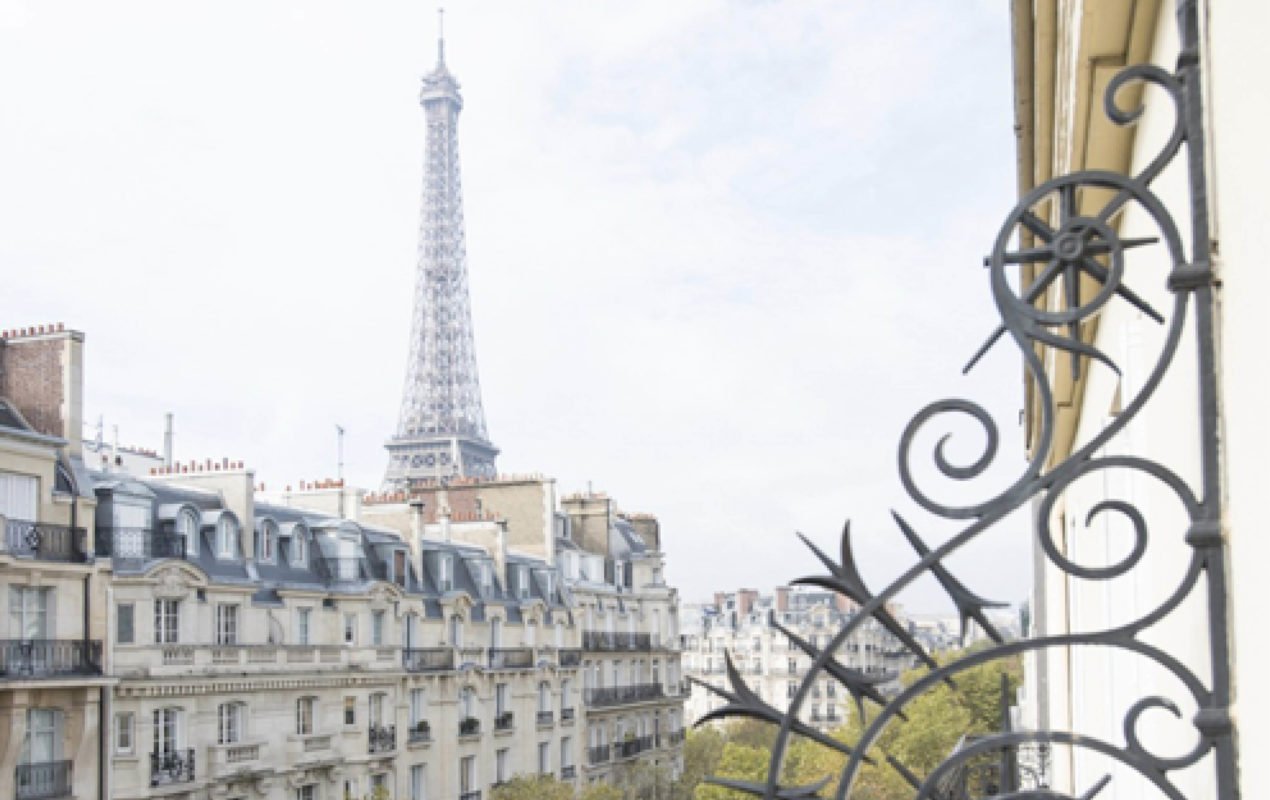
Paris on sale for dollar-based buyers
Paris Price Trends
In 2017, the average price of a Parisian apartment per square meter finally surpassed the 2012 record and reached 8,450€/m2, which marks an increase of 5.5% in one year. But this is virtually the same price as in 2010, with small fluctuations in between.
This price increase is widespread in Paris, as two years of these increasing prices have overcome four years of decline. The figure below illustrates the correction and slow rise in old Paris apartment prices.
From 2010 – 2017: No Wild Fluctuations
This is the most interesting chart because it shows the price cycle over the past decade. It’s interesting to note that Paris prices never experienced a bubble, such as occurred in the United States. Paris apartment prices rose slowly and gradually from the 1990’s onward, declined modestly from 2008 to 2009, then rose sharply in 2010 and early until 2011. Then, nothing. Paris apartment prices stagnated/declined until today.
We believe there are two reasons for this steadier pattern:
- Transactions costs are relatively high at 7%, which restricts speculation.
- The re-mortgage market does not exist in France, so it’s virtually impossible to refinance your apartment and use the cash to invest in another, and another – as happened in the US.
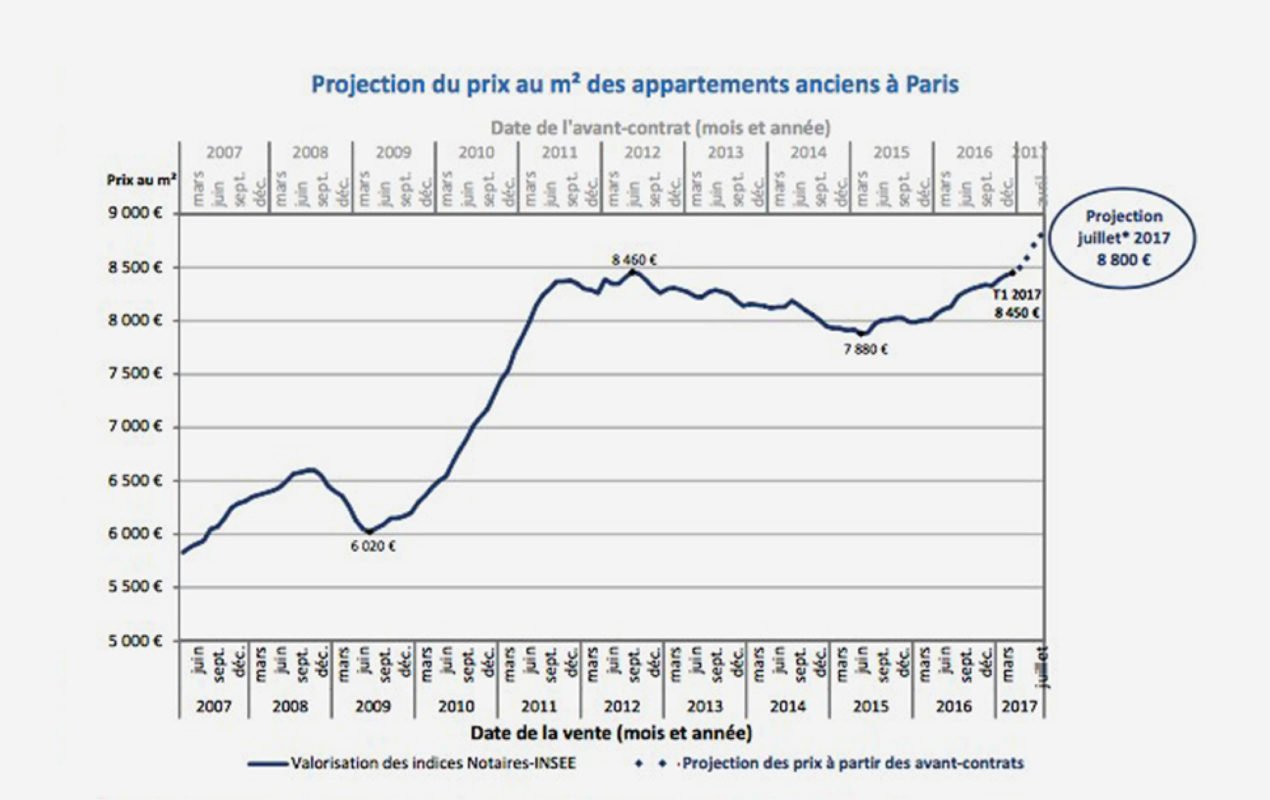
Figures courtesy Notaires de France
These prices reflect the average of all districts or arrondissements in Paris – the circular Paris Snail: all 20 quartiers of Paris. the average includes all types of apartments from unfurnished maid’s rooms without elevators, to recently remodeled luxury flats. The most important indicator is that of individual arrondissements. While they always include the best and worst, you get an overall sense of value and desirability.
Note: The above chart tracks ‘appartements anciens’ or apartments in older buildings, vs modern ones. Older buildings are valued higher than modern buildings constructed from the 1930’s onwards, which generally have a lower value due to quality, space, ceiling height etc.
Predicted 2017 Increase: 7%
2017 Q1: Price Increases By Arrondissement
As previously mentioned, the price increases in Parisian apartments were essentially universal throughout the city. Thirteen out of the twenty arrondissements saw price increases in excess of 5% over the past year, which is significant. The figure below illustrates the percent differences in price during the 1st trimester of 2017. The arrondissement with the greatest percentage increase is the 8th, with an increase of 11.8%. The only quartier that saw a decrease in prices was the 7th arrondissement, whose prices decreased by 3%. Note that a few transactions — above or below average — will cause a large swing in the quarter, as the case in the 7th.
2017 Most Expensive Paris Neighborhoods
The 6th and 7th arrondissements remain the most expensive neighborhoods. They retained their value during the 7 year slump
Past 5 Years
The variance by quarter among the highest priced quartiers is interesting; in short, only the Champs Elyseés showed a significant price increase during that time. Otherwise, prices were relatively unchanged.
The same arrondissements remain at the top, including the 6th and 8th: Saint-Germain-des-Prés at 14,850€/m2, Champs-Elysées at 14,510€/m2 and Odéon at 14,050€/m2. Advanced indicators estimate that summer of 2017 will continue to rise. In July 2017, the price per square meter of apartment could reach the record price of 8,880€ in Paris.
2017: 4 Year Evolution of Most Expensive Quartiers
Saint-Germain-des-Prés, an area in the 6th arrondissements on the Left Bank, reached an average of 14,850€/m2 , advanced only 6.3% over the past 5 years.
The Champs Elyseés has historically held a place near the top of the list. Expatriate buyers from the Middle East and Asia view the Champs Elyseés as the prime Parisian location and will pay up for it. In 2015, it was found that values have risen almost 54% in 5 years. However, for this arrondissement, we believe this came off a very distressed base.
L’Odéon area of the 6th was less expensive, potentially due to the residents’ perception of it as noisier as and busier than other areas. Compared to other quartiers, it is still highly valued nonetheless. There has been hardly any change in 7th arrondissement prices over the past 5 years. The 6th arrondissement near Monnaie is next and has shown similar patterns to the 7th; priced at 13.240/m2 and has seen almost no change in the past 5 years.
In other words, at its worst, good apartments in the best quartiers did not lose their value while the rest of the world was tanking. This is the reason for our mantra that we believe in buying in the absolute best locations, because they are the least affected when the market turns down.
Ile de la Cite and Ile St. Louis
The Islands of Paris are unique due to their unmatched location in the center of Paris, their history, beauty and scarcity value. For example, there are very few apartments or homes on Ile de la Cite’ because of the large plots taken up by Notre Dame, the beautiful hospital Hotel Dieu, the Conciergerie, Sainte Chappelle, the Law Courts and Police Headquarters. This means the few apartments can easily sell for € 30,000/m2 or more. As the other sought-after neighborhoods, they retained their value during the 7 year itch.
Recently, a 4th floor, unremodeled apartment on Place Dauphine – without an elevator — sold for over € 25,000/m2 in the space of a few days.
2017: Inner Snail Most Sought After
If you’re seriously interesting in buying in Paris, below is an important chart. It shows the extremely high variance of values by arrondissement.
Dark blue: Over €10,000/m2 – The Escargot or Paris Snail’s Inner Circle
Medium blue: €8,000 – € 10,000/m2
Light blue: Less than €8,000/m2
For example, seven arrondissements have prices per square meter above 10,000€: the 1st, 3rd, 4th, 5th, 6th, 7th, and 8th. These neighborhoods are very central in Paris. The most expensive arrondissements are the 1st and the 6th at 11,740€/m2 and 12,320€/m2 respectively. The only quartier under 7,000€/m2 is the 19th at 6,910€/m2. The 1st arrondissement is not surprisingly one of the most expensive neighborhoods, but it is also important to consider the fact that the 1st arrondissement includes the Islands: Ile de la Cité and Ile St. Louis, also known as kilomètre zéro of Paris, which is highly sought after real estate.
2017 First Quarter
2017: Record Sales Volume — Key Indicator the Market is Moving Up
With more than 10,000 apartment sales, Paris has reached a new record in the first trimester of 2017. This is a a 70% increase compared to the first trimester of 2016 and a 13% increase above the average of sales during the period of 1999 – 2007. Note that first trimester of 2016, which was an especially bad trimester. The figure below depicts the sales performance of the first trimester of 2017 compared to past periods.
Sales Volume 1999 vs 2016 and 2017: +13%
Brexit: A Potential Positive for Paris
Britain’s decision to leave the EU will have many repercussions which are being explored and discovered. One thing is clear, most EU institutions based in the UK will have to move to other cities within the EU, including Paris.
Says one EU spokesperson: “The United Kingdom is leaving the European Union and it will have no say in the location of EU agencies,” said Margaritis Schinas. At least 2 EU agencies employ over 1,000 individuals in the UK, and will definitely move to Europe: the European Medicines Agency and the European Banking Authority.
Paris will certainly be on the list of prime locations for these and other EU organizations.
Peeling Back the Years: In-depth Comparisons
2010 – 2017 The 7-Year Itch
We went back to 2009 compare overall price trends in Paris since 2011. The data wasn’t as complete, but we did notice that the average prices in 2009 marked a low point. The year 2011 shows prices only slightly below 2017’s average, but recovered quickly. On average, Paris prices haven’t changed in six years.
- 2009: marked a low at € 6,020/m2.
- 2011: average of €8,300/m2. In October of 2015, we’re back to only €8,000/m2.
- 2012: average of €8,400/m2. This was a year of recovery; prices barely higher.
- 2017: average of €8,450/m2. Virtually unchanged.
By Arrondissement: There was little historic data available by quartier, but we located a summary showing that the 6th arr. exceeded €13,000/m2 in 2012. So, 5 years later, this arrondissement is almost back to the same level as 2012.
2012 Average Prices/ Square Meter
From the end of 201 to early 2017, average prices remained essentially stable at around €8,000/m2, comprising all transactions in the snail of Paris.
Most Expensive Neighborhoods Then and Now
There were no surprises in terms of rankings, although the 2012 average prices were higher for these areas than today’s prices. We believe there is more room for price increases in the most desirable neighborhoods.
2012 Prices by Arrondissement:
Most Sought After Neighborhoods Higher Than Today
2017 Q1: Prices by Arrondissement Today
When Did the Recovery Start?
2010 Recovery Starts – But Low and Slow
The recovery started in 2010. 2009 marked the low at €6,180/m2, compared to 2010’s average price of €7,080/m2.
2010 Volumes: Increased volumes Q3 2010 vs Q3 2009 are shown in Column 1 below. They clearly mark this recovery.
Note the second column; it compares Q3 2010 against the strongest Q3for any quarter in the past. For Paris, transactions are still 9% lower than the last strong quarter – about 10 years previous. We interpret this as room for more recovery both in 2010 and today.
2009/2010: Low and Slow: Prices took 7 years to increase by 17%
As previously mentioned, 2009 marked a low, and the real estate market has recovered very slowly. In 2009, there was an average low of €6,180/m2, rising to €7,030/m2 in 2010.
2010: Most Expensive Arrondissements
While prices have remained relatively consistent, the prices in the best areas have clearly risen over the past 7 years. However, in 2010, we did see one surprise: the 5th arrondissement near the Sorbonne was marked as the mostly highly priced that quarter. The Left Bank locations in the 6th and the 7th followed.
2010 Fourth Quarter: Start of the Seven Year Itch
We like the chart below because it proves our case. In 2010, while the rest of the world was in meltdown, Paris experienced only one small blip downwards in the same period.
Not only were the effects of 2008’s global banking crisis felt a year and a half later in Paris, but there was only a small setback in the last quarter of 2010. Prices recovered quickly and remained steady for 7 years. That ‘7 Year Itch’ is over; demand, sales volume and prices have increased noticeably in 2017 and this trend is expected to continue.
2017 Market Accelerating: When good apartments are priced within the market norms, they sell more quickly than we have seen in two decades. Last week an apartment appeared for sale located near St. Sulpice; 6th floor, elevator, facing the street. It was priced at approximately € 15,500/m2 and needed a complete overhaul. We had our nontaire call and email with a full asking price offer. No ‘conditions suspensivs’, or conditions which would allow buyers to break the sale, such as financing approval. Viewings had been booked for the entire day, but the first client bought it within the first five minutes. For the first time ever, a listing will be published on a real estate site in the morning – only to show a ‘listing has been removed’ message because the apartment was sold within hours.
Conclusion
- As of 2017, Paris apartment prices and volumes exceeded previous peaks, marking the beginning of a long term upward trend.
- Despite variances between arrondissements, the top arrondissements retained their positions during the past decade and a half.
- It’s difficult to predict the future, but the US dollar has given dollar-based investors a big break to invest today.
- Interest rates remain at historic lows.
- France’s new President, Macron, is expected to lower or remove the infamous Wealth Tax, to remove rental price caps and regulations in Paris apartments.
- The UK’s decision to leave the EEC means EC institutions, employees and suppliers must migrate from London to major European cities, including Paris.
